JCM Industries 214-0905ECAP Installation guide
- Type
- Installation guide
This manual is also suitable for
JCM Industries 214-0905ECAP is a ductile iron coupling designed for use with water pipelines. It consists of a middle ring, two follower rings, a gasket, and bolts. The middle ring is placed over the joint between two pipes, and the follower rings and gasket are then installed. The bolts are tightened to compress the gasket and create a seal.
The 214-0905ECAP is suitable for use with pipes with a diameter of 9.05 inches. It has a maximum pressure rating of 300 psi and can be used in temperatures ranging from -20 to 140 degrees Fahrenheit.
The 214-0905ECAP is a versatile coupling that can be used in a variety of applications. It is commonly used to connect pipes in water distribution systems, but it can also be used in other applications, such as irrigation systems and industrial piping.
JCM Industries 214-0905ECAP is a ductile iron coupling designed for use with water pipelines. It consists of a middle ring, two follower rings, a gasket, and bolts. The middle ring is placed over the joint between two pipes, and the follower rings and gasket are then installed. The bolts are tightened to compress the gasket and create a seal.
The 214-0905ECAP is suitable for use with pipes with a diameter of 9.05 inches. It has a maximum pressure rating of 300 psi and can be used in temperatures ranging from -20 to 140 degrees Fahrenheit.
The 214-0905ECAP is a versatile coupling that can be used in a variety of applications. It is commonly used to connect pipes in water distribution systems, but it can also be used in other applications, such as irrigation systems and industrial piping.


-
 1
1
-
 2
2
JCM Industries 214-0905ECAP Installation guide
- Type
- Installation guide
- This manual is also suitable for
JCM Industries 214-0905ECAP is a ductile iron coupling designed for use with water pipelines. It consists of a middle ring, two follower rings, a gasket, and bolts. The middle ring is placed over the joint between two pipes, and the follower rings and gasket are then installed. The bolts are tightened to compress the gasket and create a seal.
The 214-0905ECAP is suitable for use with pipes with a diameter of 9.05 inches. It has a maximum pressure rating of 300 psi and can be used in temperatures ranging from -20 to 140 degrees Fahrenheit.
The 214-0905ECAP is a versatile coupling that can be used in a variety of applications. It is commonly used to connect pipes in water distribution systems, but it can also be used in other applications, such as irrigation systems and industrial piping.
Ask a question and I''ll find the answer in the document
Finding information in a document is now easier with AI
Related papers
-
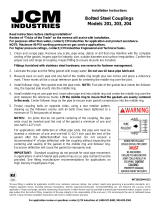 JCM Industries 201-008401 Installation guide
JCM Industries 201-008401 Installation guide
-
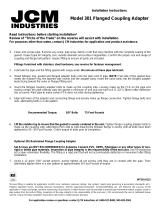 JCM Industries 301-0690 Installation guide
JCM Industries 301-0690 Installation guide
-
JCM Industries 432-1740X2 Installation guide
-
JCM Industries 161-1320-12 Installation guide
-
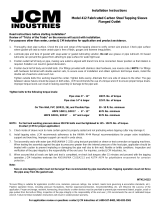 JCM Industries 412-2580X6ESS Installation guide
JCM Industries 412-2580X6ESS Installation guide
-
JCM Industries 110-0166-3 Installation guide
-
JCM Industries 405-0745X16IP Installation guide
-
JCM 101-0863-18 Installation guide
-
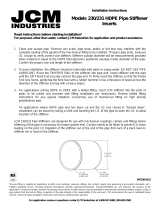 JCM Industries 231-08-0725 Installation guide
JCM Industries 231-08-0725 Installation guide
-
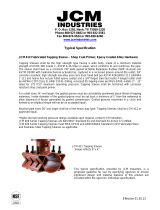 JCM Industries 412-1740X4ESS Installation guide
JCM Industries 412-1740X4ESS Installation guide
Other documents
-
Ford Meter Box FC1-940-940 Installation guide
-
Ford Meter Box FC2W-6-L12-SH Installation guide
-
Aurora 3500 Series Industrial Process Pumps Owner's manual
-
Sharp FD44450X16 Installation guide
-
American Flow Control MARK-73 Installation guide
-
American Flow Control AFCB84BLAOLTY Installation guide
-
ITT Goulds Pumps VCW Operating instructions
-
Romac Industries 242-0663 Installation guide
-
American Flow Control 2536ALSFMM Installation guide
-
ITT 710 Operating instructions






